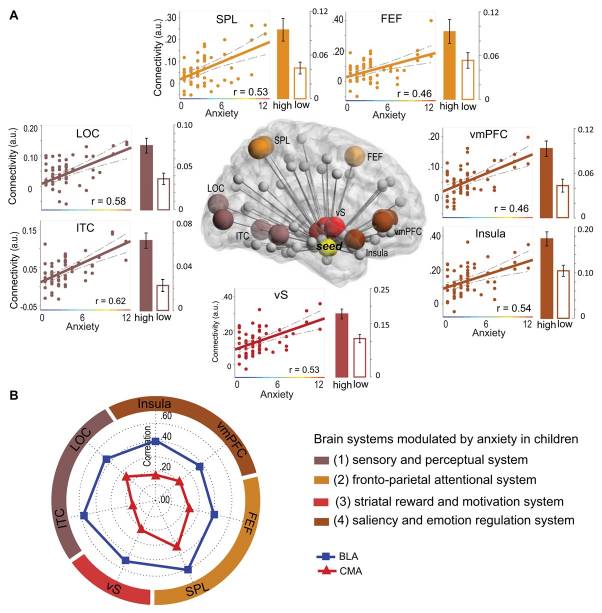
Early childhood anxiety has been linked to an increased risk for developing mood and anxiety disorders. Little, however, is known about its effect on the brain during a period in early childhood when anxiety-related traits begin to be reliably identifiable. Even less is known about the neurodevelopmental origins of individual differences in childhood anxiety.
We combined structural and functional magnetic resonance imaging with neuropsychological assessments of anxiety based on daily life experiences to investigate the effects of anxiety on the brain in 76 young children. We then used machine learning algorithms with balanced cross-validation to examine brain-based predictors of individual differences in childhood anxiety.
Even in children as young as ages 7 to 9, high childhood anxiety is associated with enlarged amygdala volume and this enlargement is localized specifically to the basolateral amygdala. High childhood anxiety is also associated with increased connectivity between the amygdala and distributed brain systems involved in attention, emotion perception, and regulation, and these effects are most prominent in basolateral amygdala. Critically, machine learning algorithms revealed that levels of childhood anxiety could be reliably predicted by amygdala morphometry and intrinsic functional connectivity, with the left basolateral amygdala emerging as the strongest predictor.
Individual differences in anxiety can be reliably detected with high predictive value in amygdala-centric emotion circuits at a surprisingly young age. Our study provides important new insights into the neurodevelopmental origins of anxiety and has significant implications for the development of predictive biomarkers to identify children at risk for anxiety disorders.








